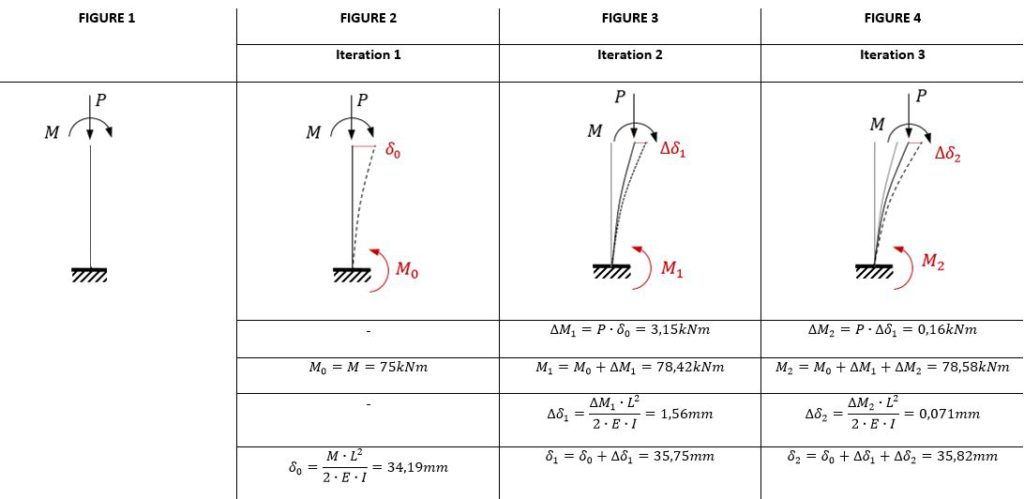We perfer to explain the difference using an example:

- A column loaded with a bending moment M and a point load P needs to be calculated (Figure A = intitial state).
- Using the geometry and supports the reactions M0 and deformation δ0 can be calculated (Figure B = iteration 1).
- You could stop the calculation but because of the deformation δ0, the load P has an eccentricity (Figure C= iteration 2).
Resulting in an additional moment ΔM1. Increasing the total moment M1 = M0 + ΔM1.
Resulting in additional deformation Δδ1. Increasing the total deformation δ1 = δ0 + Δδ1. - Again you could stop the calculation but because of the additional deformation Δδ1, the load P has an additional eccentricity (Figure D = iteration 3).
Resulting in an additional moment ΔM2. Increasing the total moment M2 = M1 + ΔM2.
Resulting in additional deformation Δδ2. Increasing the total deformation δ2 = δ1 + Δδ2. - You could continue the calculation and do an additional iteration, but it will almost not affect the final result. Δδ2 has become quite small during iteration 3, that the affect of Δδ2 will be neglectable. You stop the calculations
Conclusions:
- The calculation in ‘Iteration 1’ is called a first order calculation.
Equilibrium expressed as function of the initial geometry.
If the boundary conditions are adequately defined, a solution will always be found.
Because of the simplicity, this type of calculation is used in hand calculations. - The calculation from ‘Iteration 1’ to ‘Iteration 3) is called a second order calculation.
Equilibrium expressed as function of the a priori unknown deformation state.
Results in larger internal forces and additional deformations relative to a 1st order calculation. The additional effects are called ‘second order effects’.
Convergence is no certainty. For some structures the deformations and internal forces will keep increasing until it collapses.
Because of its complexity, this type of calculation is done by software.

